Intel is throwing shade at AMD CPUs again
Performance for the 'real world,' backed by cherry picked benchmarks.
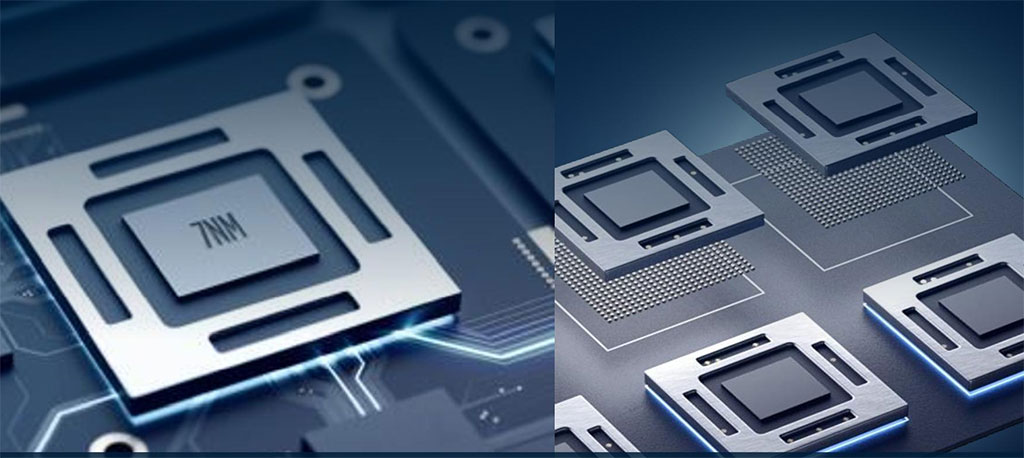
CES 2020 is here, and one of my first visits was with Intel, at its performance workshop. Intel reiterated its position on performance and features, basically throwing shade at AMD's competing Ryzen CPUs in the process. That wasn't the only purpose of the workshop, however. Intel also revealed a few scant details about its upcoming Comet Lake CPUs (over 5GHz, coming soon to mobile), showed off a new high performance NUC, and talked about the importance of AI "in the real world."
First up, Intel put two gaming laptops with otherwise similar specs—GeForce RTX 2060 graphics, 16GB DDR4-2400 memory, and a 512GB Intel 660p SSD—against each other. The only difference is in the CPU: AMD Ryzen 7 3750H vs Intel Core i9-9750H. Right away, you'll probably notice that this is a comparison between a 6-core/12-thread Intel part, while AMD's mobile Ryzen 3000H CPUs are only 4-core/8-thread parts that include Vega integrated graphics. To be fair, AMD doesn't have a 6-core/12-thread mobile CPU—yet. We expect that to be announced at CES, along with 8-core/16-thread CPUs.
So this is really a look at what gaming laptops have been like for the last six months. Yes, Intel is faster right now and is the better choice for a high-end gaming laptop. Ryzen 4000 mobile CPUs could challenge the status quo in the coming months.
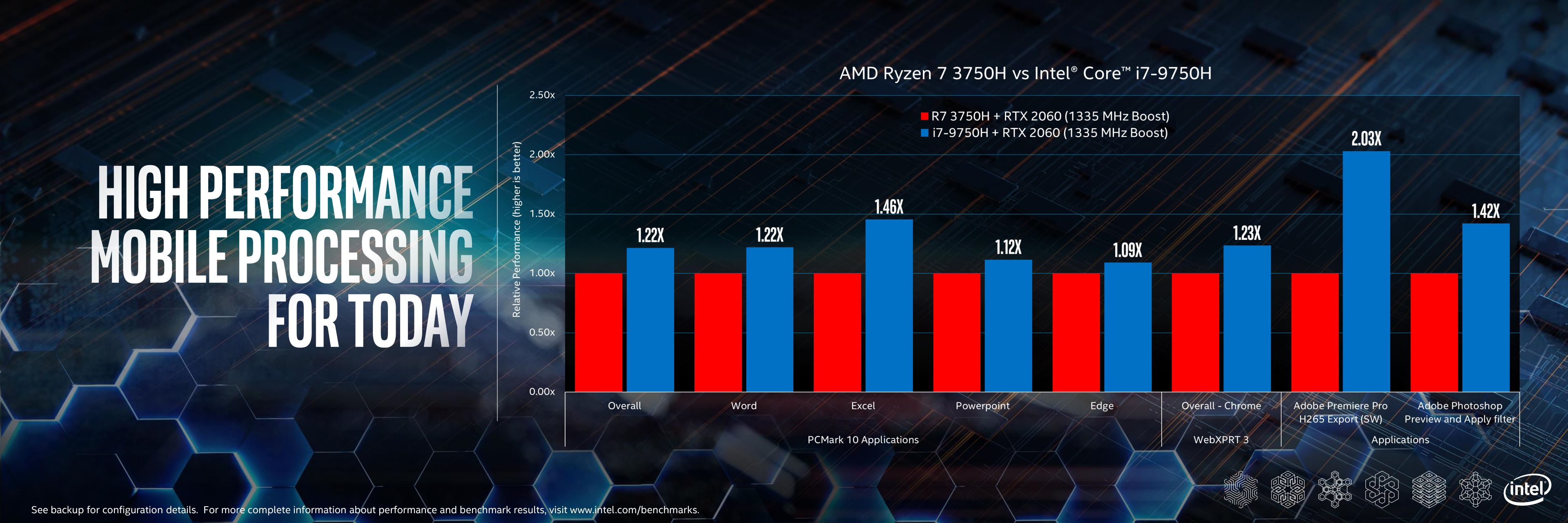
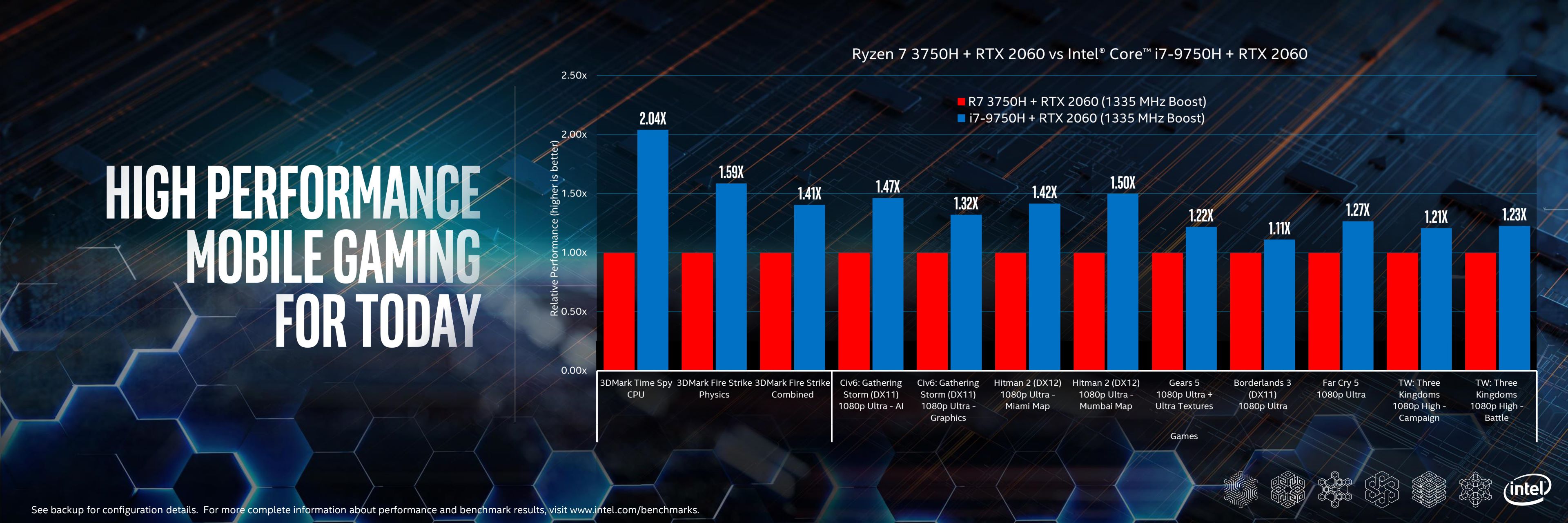
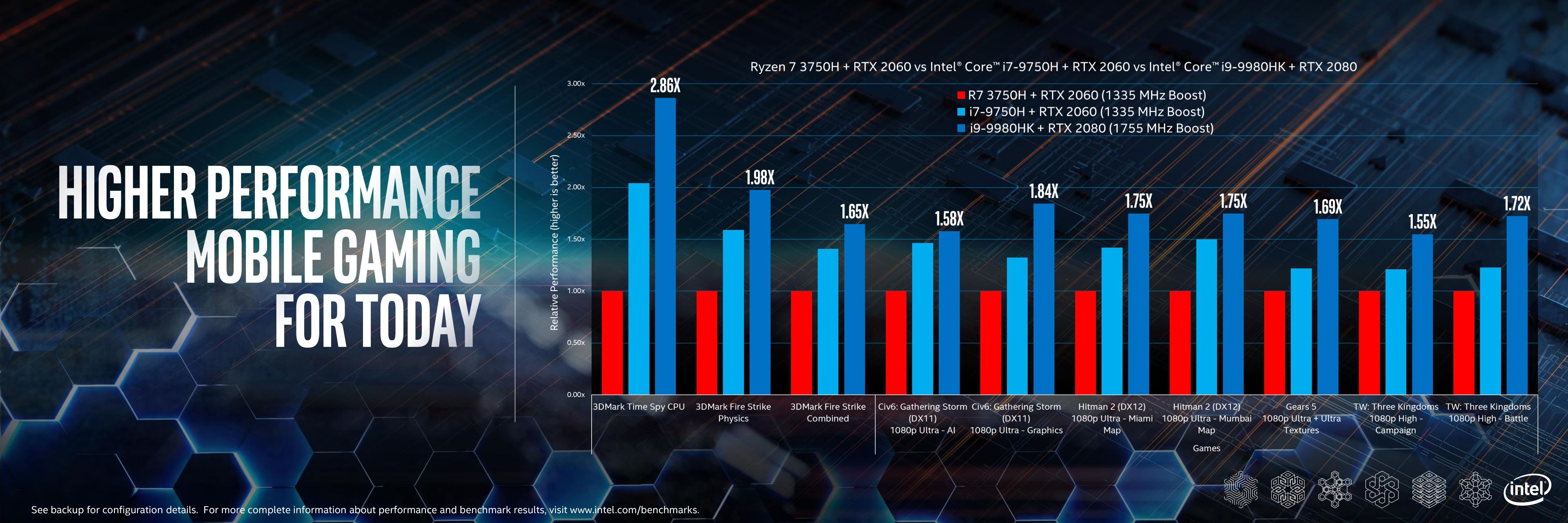
With more cores and generally higher clockspeeds competing against AMD's Zen+ architecture, Intel showed a variety of tests where it leads in gaming performance by anywhere from 11 percent to as much as 104 percent. General application performance also favors Intel in these tests, by 9 to 103 percent, depending on the test.
The problem I have with results like this is that Intel knows AMD has new Ryzen 4000 mobile CPUs coming out, which will use the newer Zen 2 architecture and 7nm lithography. Obviously Intel can't run tests against an unreleased product, but hopefully we'll get some 'real-world' comparisons from AMD in the coming days to see how things will change in 2020.
Next up, Intel put its Core i7 Ice Lake 10nm mobile parts against AMD's Ryzen 7 U-series Ryzen CPU. Again, this is current generation AMD and Intel, only this time things are constrained to a nominal 15-20W TDP and integrated graphics. TDP is the thermal design power, or how much heat the chips put out, and both AMD and Intel chips can exceed the target for short periods of time. Compared to a desktop, or even a gaming laptop, working within such constraints will limit performance potential quite a bit.
For the performance comparisons, Intel used different laptops—one with an i7-10710U, and two others with i7-1065G7. For battery life comparisons, Intel used Microsoft Surface 3 15-inch laptops in both cases, one with a Core i7-1065G7 and the other with Ryzen 7 3780U.
The biggest gaming news, reviews and hardware deals
Keep up to date with the most important stories and the best deals, as picked by the PC Gamer team.
While the laptops are mostly comparable specs, it's important to point out that the Intel system uses LPDDR4X-3733 RAM for the gaming comparison, while AMD's laptop uses DDR4-2400 memory. The Core i7-1065G7 is Intel's top Iris Plus Graphics solution right now, and AMD's Vega 11 is likewise the top integrated GPU, but the gap in memory clocks could easily account for a 20 percent or higher difference in performance. At least it's 4-core/8-thread CPUs on both sides.
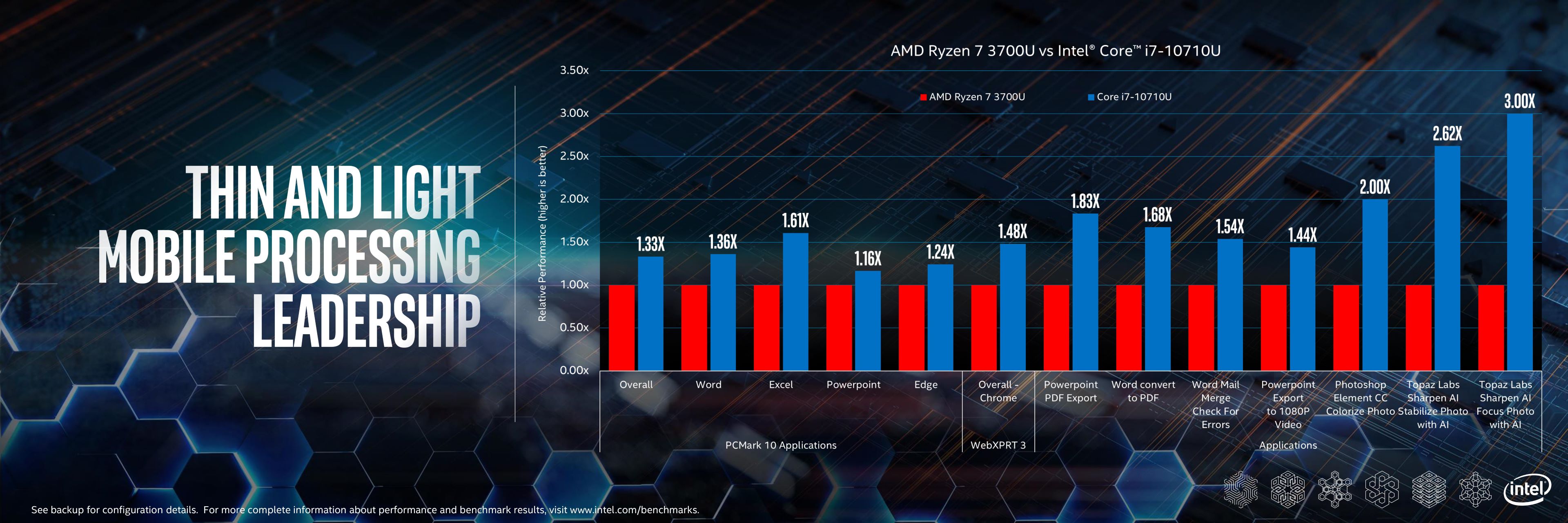
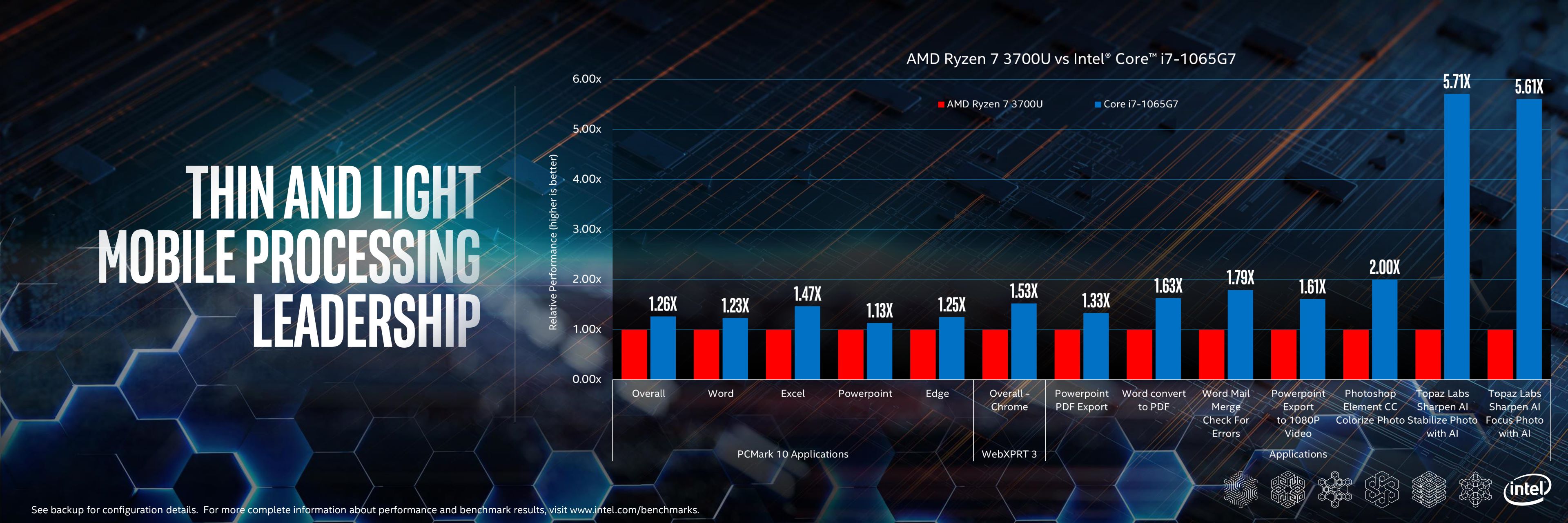
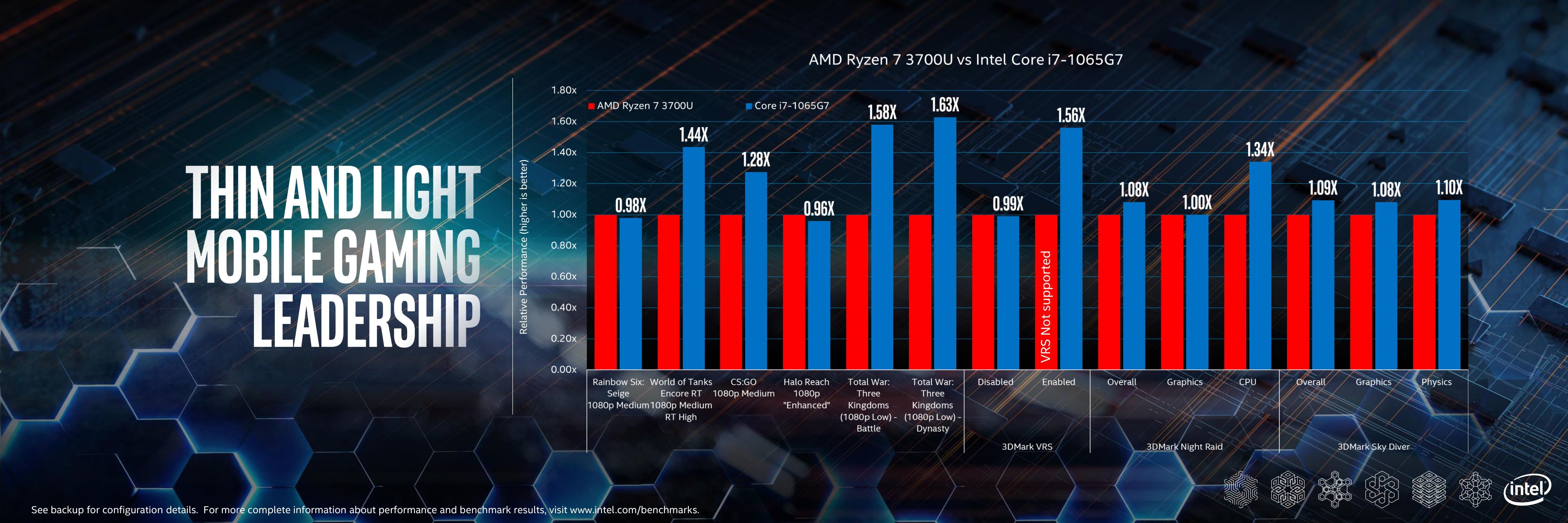
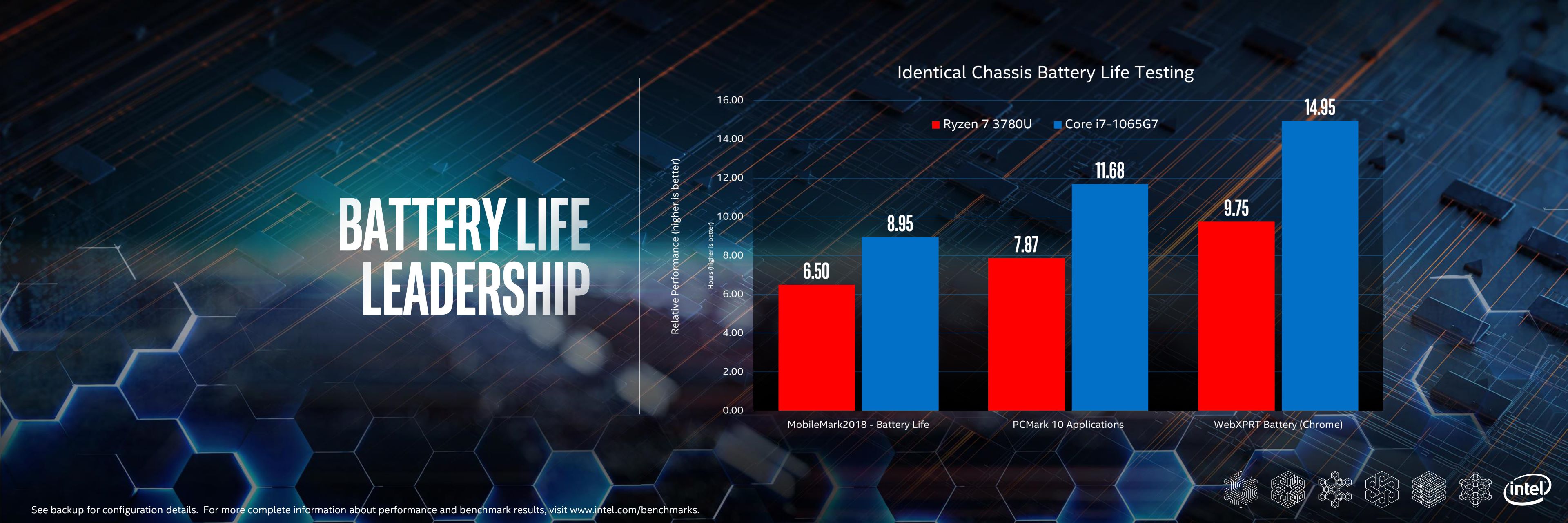
Take these results with a dose of skepticism, in other words. It's a representation of performance in the chosen games at the specified settings, but the games and tests used on the graphics side at least are relatively limited. There's nothing super demanding, and even then Intel only matches performance in several of the tests. Also note that in the non-gaming tests, Intel switched to a CPU specifically tailored to that workload—the i7-10710U can boost up to 4.7GHz where the i7-1065G7 only boosts up to 3.6GHz.
As before, Intel wins most of the laptop comparisons. That's not new information. The real question will be what happens when AMD gets 7nm Ryzen CPUs into laptops, which will be happening soon. Battery life in particular could benefit greatly from the Zen 2 architecture.
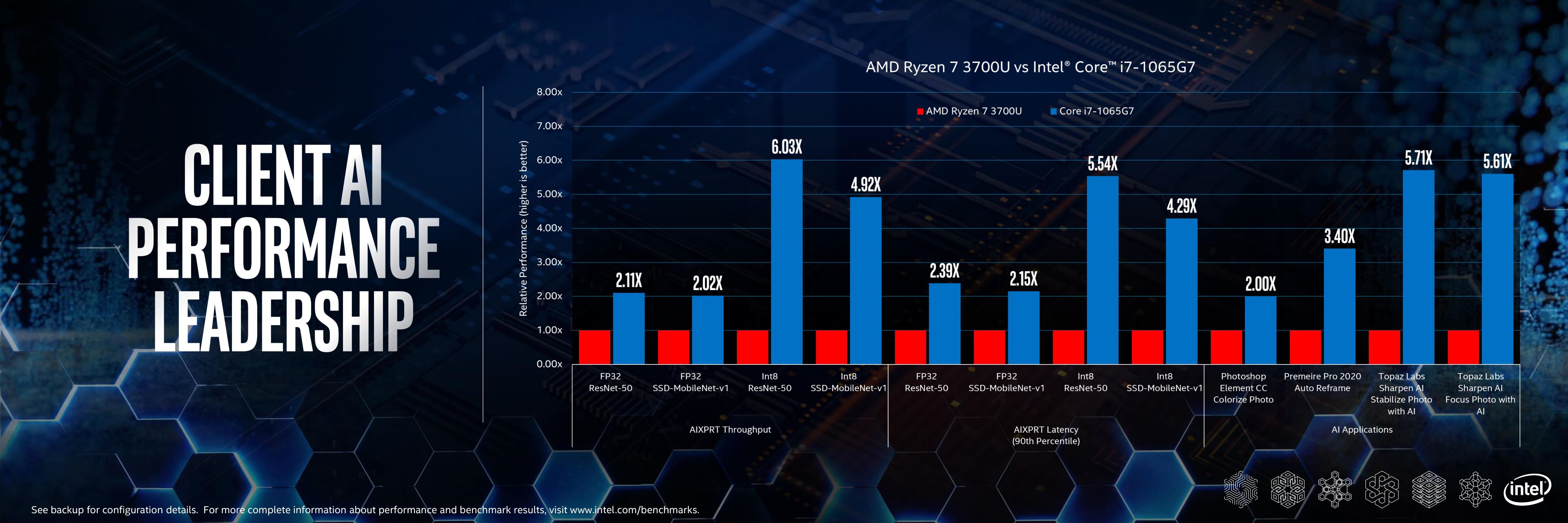
Last, Intel showed some comparisons between its 1065G7 and AMD's 3700U in 'client AI' workloads. I don't have much to say about AIXPRT, other than it shows Intel leading by sometimes significant amounts. Is that a useful metric for real-world performance comparisons, though? To me, AIXPRT on a laptop feels about as useful as running Cinebench on a laptop. The AI applications on the other hand are something people might actually do, particularly the Adobe colorize photo option. The DL Boost instructions in Ice Lake are helpful here, and if similar AI workloads gain popularity in the coming years it's one more item Intel can point to.
We talked a bit about the new Intel Ghost Canyon NUC in a separate article, and hopefully we'll hear more about Comet Lake soon. The short summary is that Ghost Canyon is a much larger NUC, and this time it has support for dedicated graphics cards. Comet Lake is the follow up to Coffee Lake refresh, and is expected to launch soon with up to 10-core/20-thread models. Whether any of those will be for laptops remains to be seen. Intel did have one final tease at the end of the presentation:
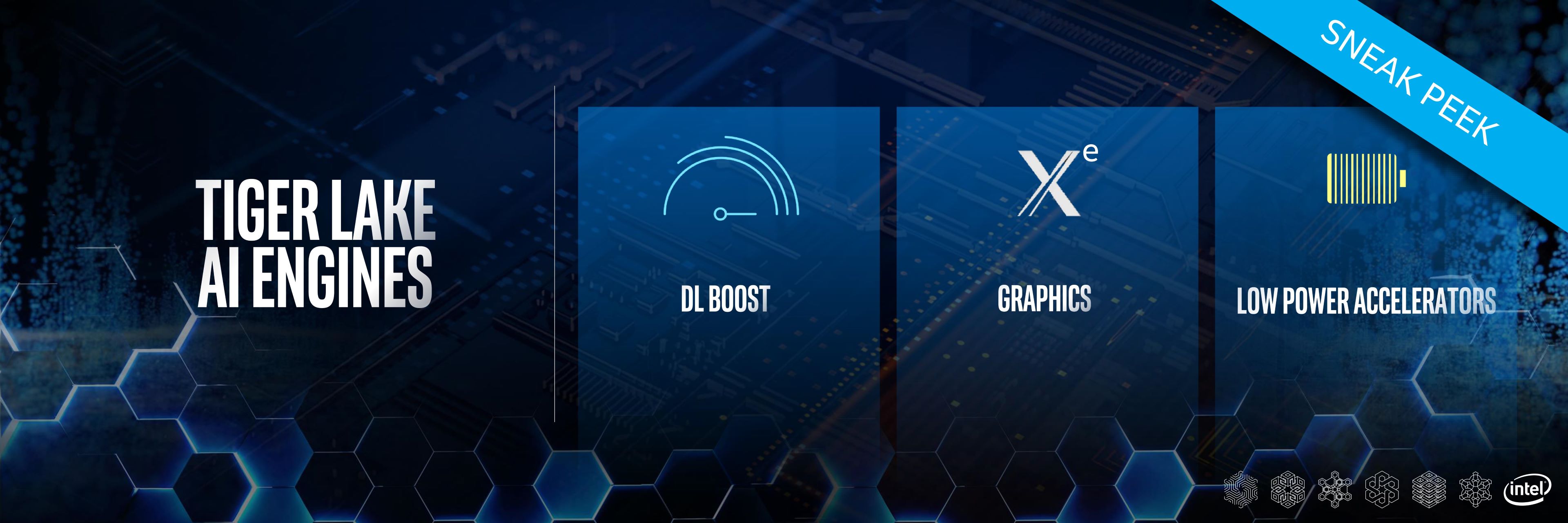
Ice Lake is Intel's first 'real' 10nm CPU, because Cannon Lake never released in a meaningful way. Tiger Lake is where things get more interesting, as it will include Intel's updated Xe Graphics and additional DL Boost enhancements. I'm still not convinced client AI workloads are going to be the next big thing, but AI and deep learning is a hot topic these days, and I wouldn't bet against it either. Stay tuned for additional CES 2020 and Intel coverage over the coming days, where hopefully we'll learn more about Tiger Lake and Xe Graphics.
Jarred's love of computers dates back to the dark ages when his dad brought home a DOS 2.3 PC and he left his C-64 behind. He eventually built his first custom PC in 1990 with a 286 12MHz, only to discover it was already woefully outdated when Wing Commander was released a few months later. He holds a BS in Computer Science from Brigham Young University and has been working as a tech journalist since 2004, writing for AnandTech, Maximum PC, and PC Gamer. From the first S3 Virge '3D decelerators' to today's GPUs, Jarred keeps up with all the latest graphics trends and is the one to ask about game performance.


